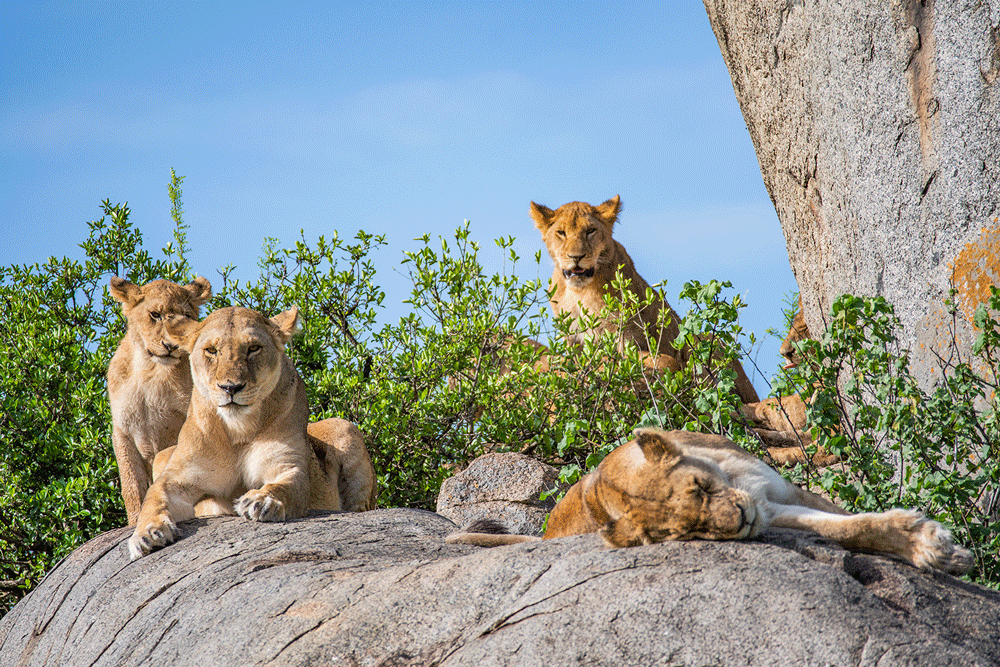
The Serengeti is known for its endless plains of savannah and forest landscapes. The “Siringeti” in Maasai means the never-ending plains. It is an area of about 30,000 km2 in the north of Tanzania and Kenya, of which 80% is located in Tanzania.
The park is famous for the migration involving about 1.5 million herbivores and followers, thousands of predators are moving because of the drought and the northern hills to the southern plains. After the rains in the mid-April, they go back via a detour through the western part. This is known as the Great Migration. The grasslands cover more than one-third of the park, where you will find many animals throughout the year.
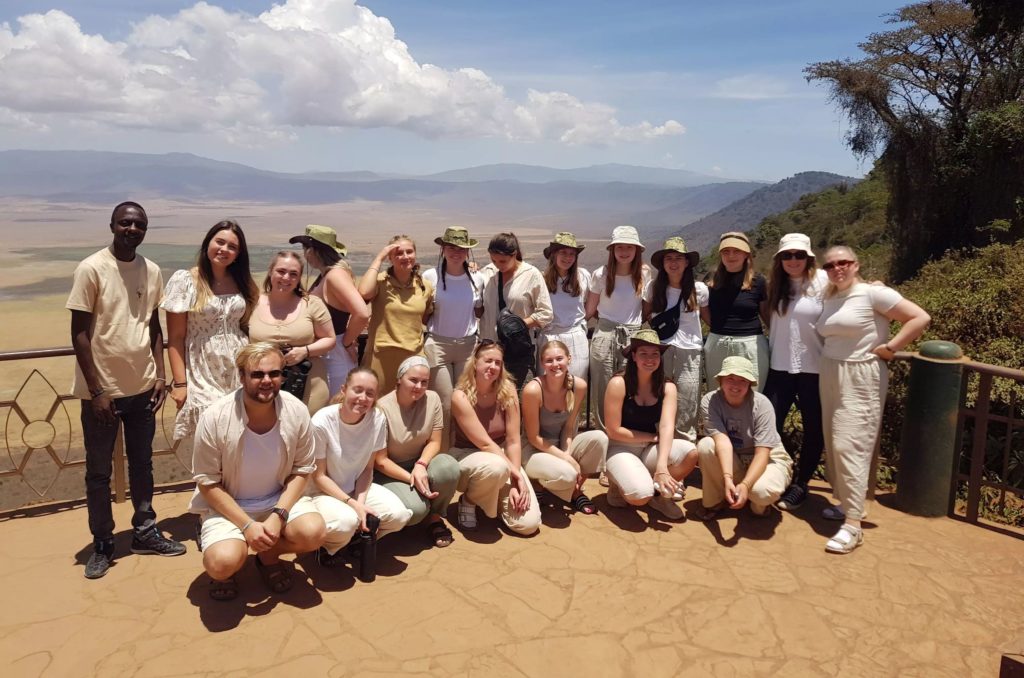
The Ngorongoro Crater has a diameter of about 20 kilometers and 600 – meter – high crater wall. The Ngorongoro Crater is the largest intact crater in the world. The crater life is estimated to be 30,000 in large mammals with a Salt Lake situated
in the center of the crater. This is one of the most densely populated wildlife areas in the world. It is a unique area where animals and humans such as the authentic Masai and Hadzabe live together. From the edge of the crater, you look out over the impressive crater and its wonderful inhabitants.
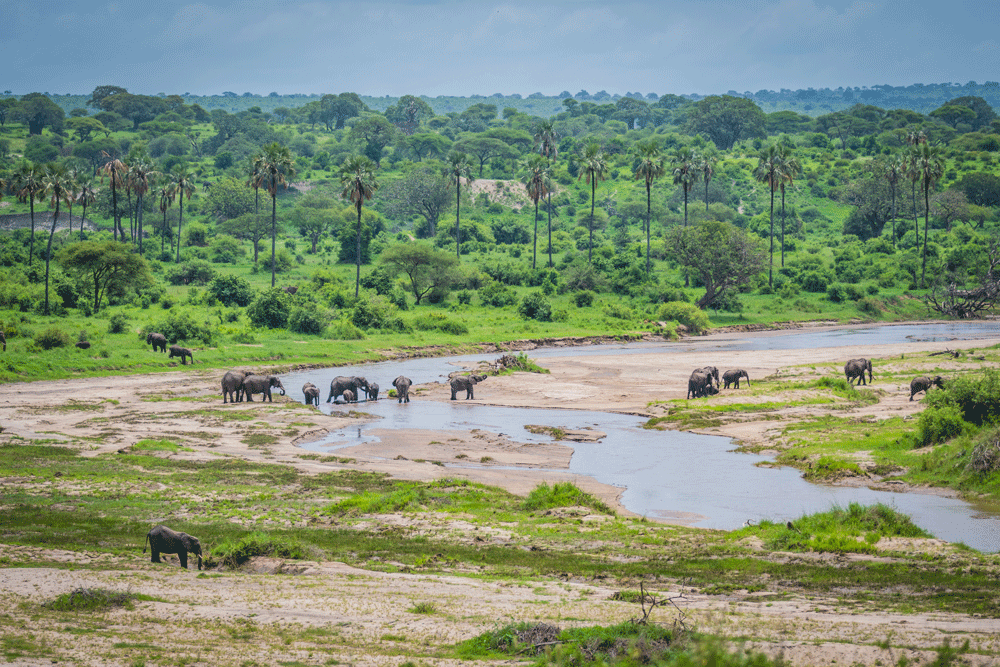
Tarangire National Park is probably one of the best places in East Africa to watch elephants and to get very close to these animals. It is known as the place with the largest herds of elephants, which can often be seen near the Tarangire River.
Herds of up to 300 elephants scratch the dry river bed for underground streams, while migratory wildebeest, zebra, buffalo, impala, gazelle, hartebeest and eland crowd the shrinking lagoons. It’s the greatest concentration of wildlife outside the Serengeti ecosystem – a smorgasbord for predators – and the one place in Tanzania where dry-country antelope such as the stately fringe-eared oryx and peculiar long-necked gerenuk are regularly observed.
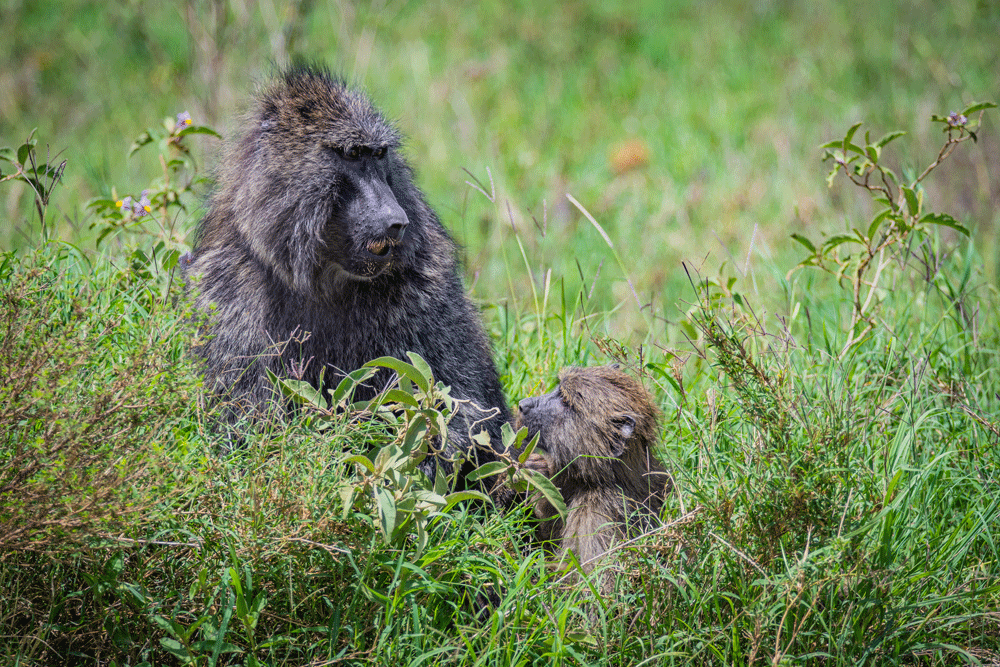
Stretching for 50km along the base of the rusty-gold 600-metre high Rift Valley escarpment, Lake Manyara is a scenic gem. The compact game-viewing circuit through Manyara offers a virtual microcosm of the Tanzanian safari experience. From the
entrance gate, the road winds through an expanse of lush jungle-like groundwater forest where hundred-strong baboon troops lounge nonchalantly along the roadside, blue monkeys scamper nimbly between the ancient mahogany trees, dainty bushbuck tread warily through the shadows, and outsized forest hornbills honk cacophonously in the high canopy.
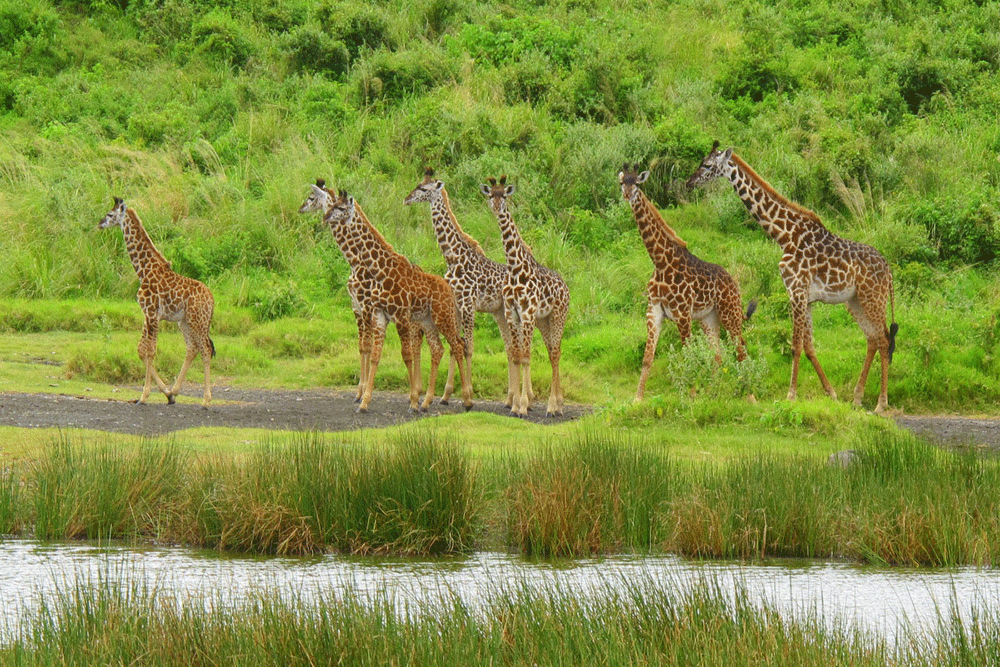
The park is located very close to Arusha city (35m minutes’ drive) between Arusha and Moshi. Unlike other national parks, it is small and visitors can see a lot of different games in a short time with different landscapes.
The park’s scenery with Mt. Meru in the background makes Arusha National Park ideal for people with limited time or as an appetizer to the other larger parks. Although it is very rare to see big cats in the park, sightings of leopards has been reported.
The name Arusha comes from the word “Waarusha”, a tribe that traditionally used to live in the park. The Wa Arusha tribe is very similar to the Masai, sharing many rituals and customs. The only difference is that the Waarusha are no longer Nomads moving from place to place. The Waarusha are now farmers doing zero-grazing and growing crops for a living.
African Merit Safari is an experienced team of African travel specialists based in Arusha, Tanzania. Together our team of talented travel experts has well over a decade worth of experience in Tanzania travel industry.

